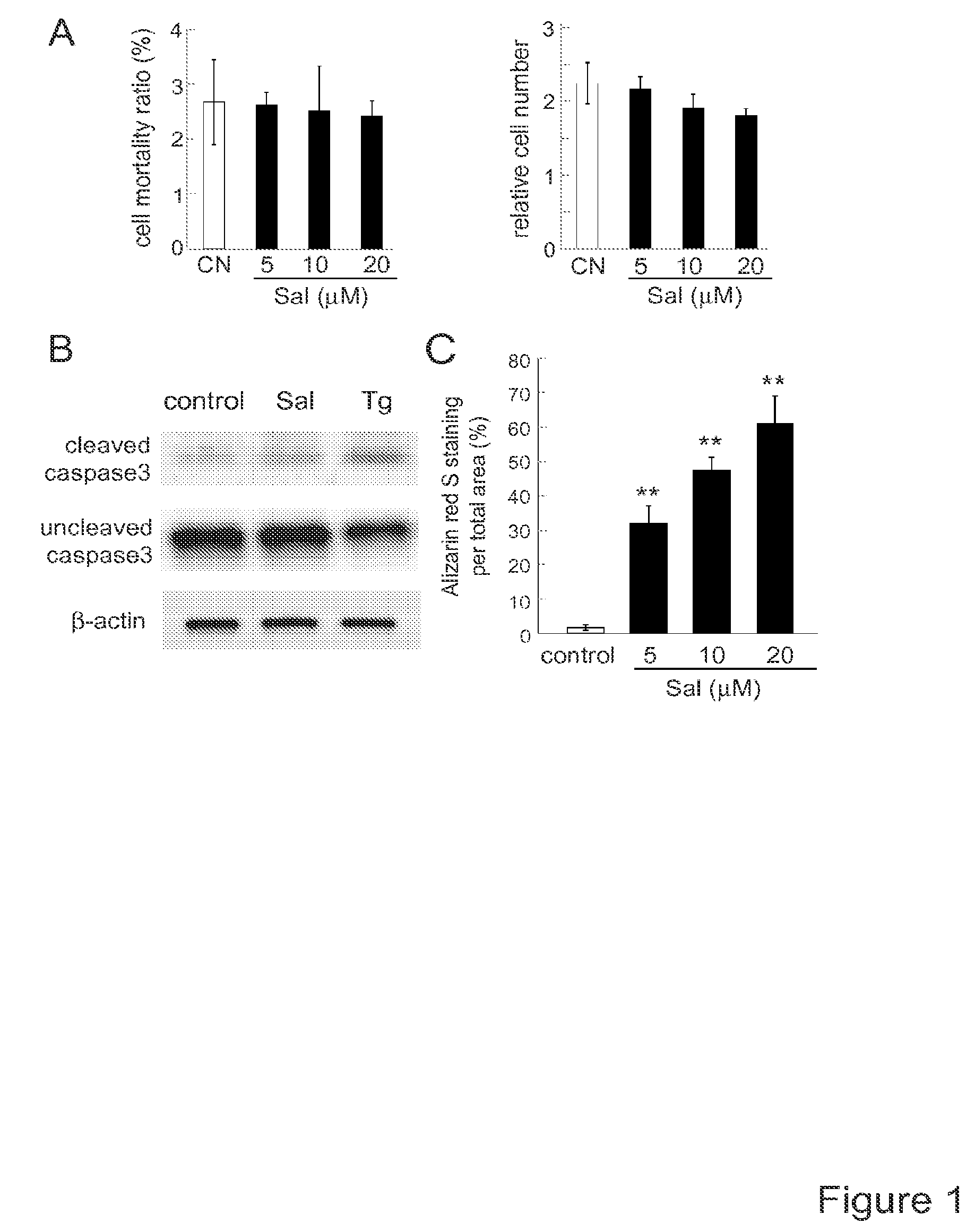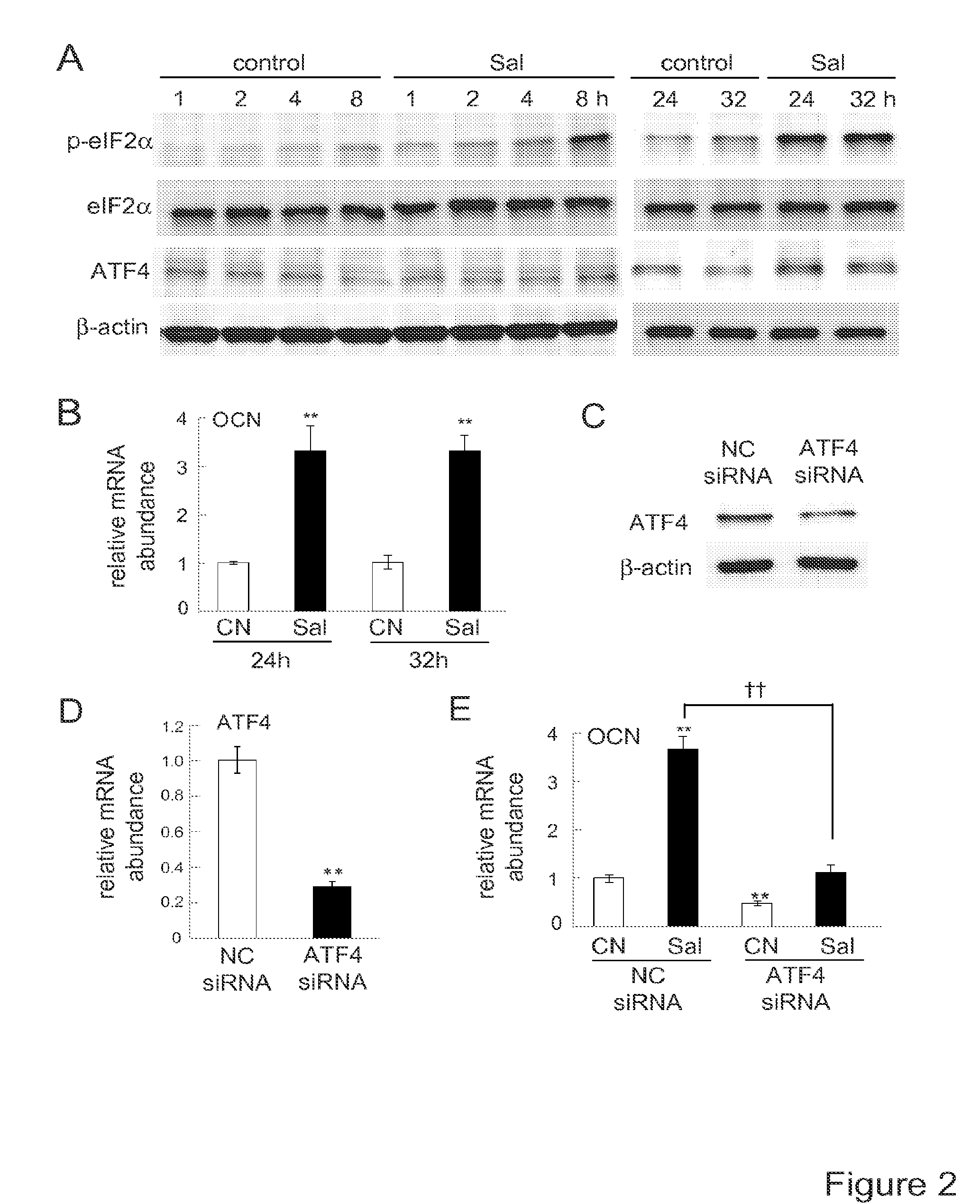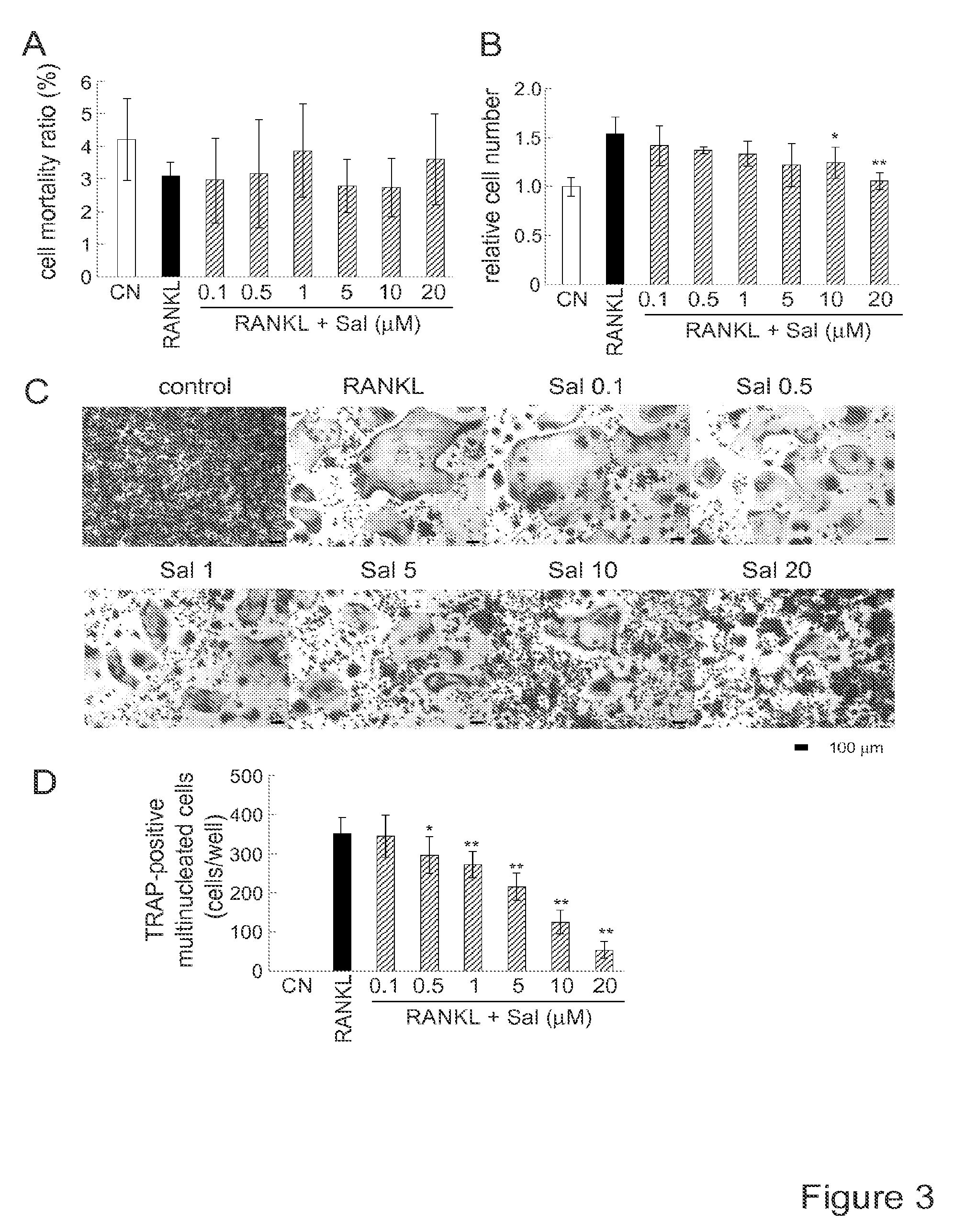Compositions and methods for treating bone diseases
a technology for bone diseases and compositions, applied in the field of bone diseases, can solve problems such as the risk of bone fracture, and achieve the effects of inhibiting raw264.7 differentiation, stimulating matrix deposition of osteoblasts, and reducing the expression of nuclear factor of activated t cells cl
- Summary
- Abstract
- Description
- Claims
- Application Information
AI Technical Summary
Benefits of technology
Problems solved by technology
Method used
Image
Examples
examples
[0149]METHOD EXAMPLE. Cell culture. MC3T3 E1 mouse osteoblast-like cells (clone 14—MC3T3 E1-14; and no clonal cells in supplementary figures), and RAW264.7 mouse pre-osteoclast (monocyte / macrophage) cells were cultured in αMEM containing 10% fetal bovine serum and antibiotics (50 units / ml penicillin, and 50 μg / ml streptomycin; Life Technologies, Grand Island, N.Y., USA). Cells were maintained at 37° C. and 5% CO2 in a humidified incubator. Cell mortality and live cell numbers were determined 24 h after the treatment with 20 ng / ml RANKL (PeproTech, Rocky Hills, N.C., USA) in response to 0.1-20 μM salubrinal or 1-20 μM guanabenz acetate (Tocris Bioscience, Ellisville, Mo., USA). Cells were stained with trypan blue and the numbers of live and dead cells were counted using a hemacytometer.
[0150]METHOD EXAMPLE. Inhibition of osteoclastogenesis of RAW264.7 cells by salubrinal. The primary aim of this study is to evaluate the effects of salubrinal on osteoclastogenesis. In response to 0.1-...
PUM
| Property | Measurement | Unit |
|---|---|---|
| density | aaaaa | aaaaa |
| Ra | aaaaa | aaaaa |
| bone mass | aaaaa | aaaaa |
Abstract
Description
Claims
Application Information
 Login to View More
Login to View More - R&D
- Intellectual Property
- Life Sciences
- Materials
- Tech Scout
- Unparalleled Data Quality
- Higher Quality Content
- 60% Fewer Hallucinations
Browse by: Latest US Patents, China's latest patents, Technical Efficacy Thesaurus, Application Domain, Technology Topic, Popular Technical Reports.
© 2025 PatSnap. All rights reserved.Legal|Privacy policy|Modern Slavery Act Transparency Statement|Sitemap|About US| Contact US: help@patsnap.com



